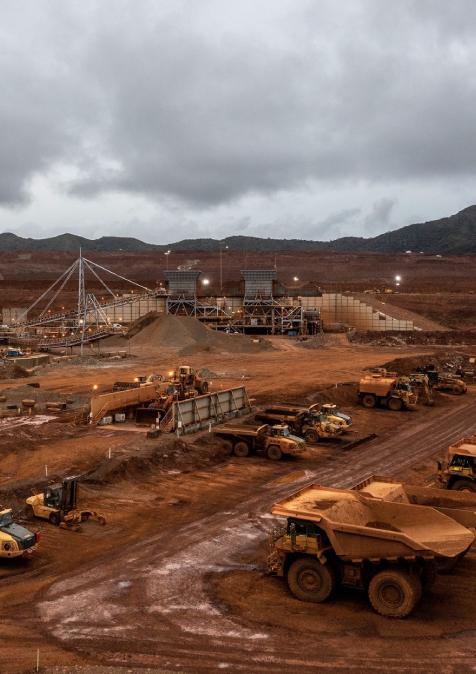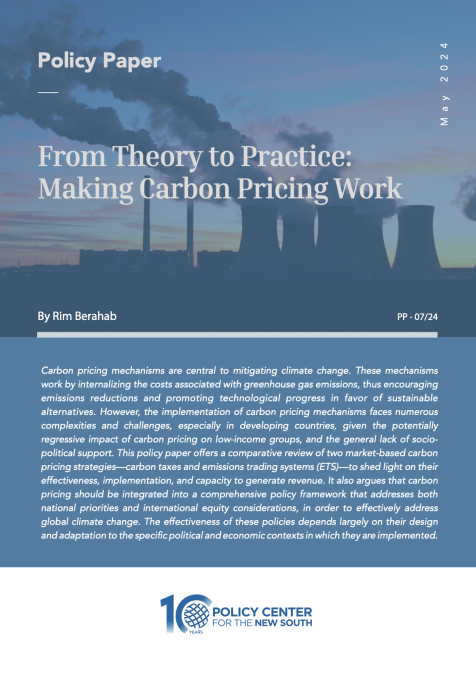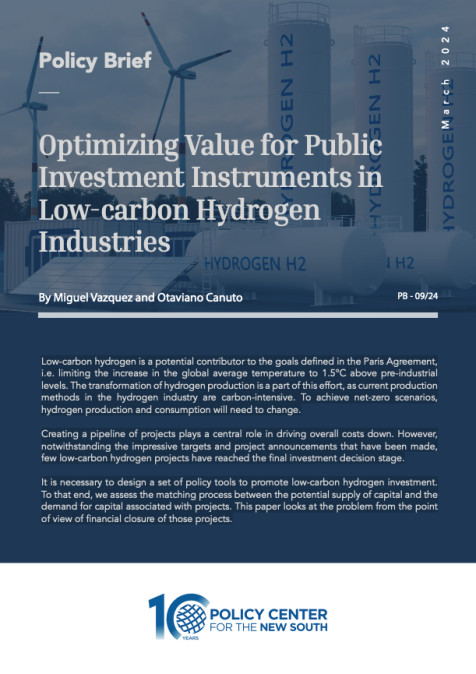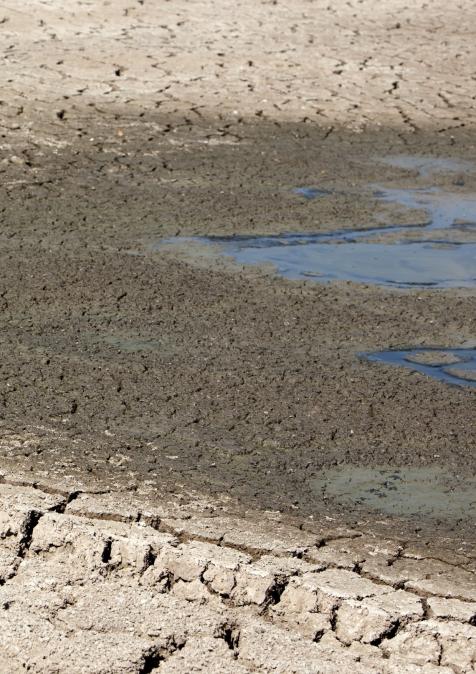Publications /
Opinion
Recent years have witnessed several governments’ discussions about the sustainability and adequacy of the current energy strategies. The latest Conference of Parties (COP) 21, was another occasion to try to move to a binding and universal agreement on climate, with an end goal of maintaining global warming bellow 2°C. The reason is that a large portion of the international community seems to be reaching a consensus that moving from fossil fuels is becoming a pressing necessity. Yet, while many countries have started the process of developing green/renewable energy initiatives, progress is still slow and the full adoption of such energies seems out of reach at least in the short run. In this context, experts have been trying to promote natural gas as another credible and short term fossil fuel alternative. They consider that natural gas (at least at an initial stage) can fit in the energy mix that countries aim for in the context of energy transition. However, while natural gas presents several advantages, there are still obstacles that restrain its mainstream distribution, such as the volatility and asymmetry of prices, the geopolitical nature of the market, the expensive CAPEX requirements, the low number of market players, the logistical difficulties and the regulatory gap/vacuum, among other factors.
The Future of Natural Gas, a joint book project of OCP Policy Center (OCPPC) and the Insitituto Affari Internazionali (IAI), explores various elements of the natural gas market and tries to grasp its complexities. It also analyses the current trends and attempts to forecast the future developments of this commodity in various consuming and producing regions of the world.
The book launch held in rabat on Friday May 27th, 2016, was an opportunity for the authors and other participants, from various backgrounds, to make their cases, discuss, brainstorm and exchange on numerous topics related to the recent developments of natural gas in different markets.
The United States: The Market Leader
The first market of interest that experts explored is the United States, the largest producer and consumer of natural gas in the world with an average of 80.1 Billion Cubic Feet per day (Bcf/d) and 76.5 Bcf/d respectively (as of February 2016). The country is seen as a success story in terms of the integration of natural gas in the energy mix. From 1990 to 2014, coal-fired power plants’ share of electricity generation capacity declined from 42% to 28% while the share of natural gas-fired electric generation capacity soared from 19% to 40%. Similar trends were observed in actual electricity supply and natural gas production and experts expect the commodity to gain more ground in the short run, as a result of declining prices, slowing demand for coal, strict air pollution emission regulations and financial incentives that promote the use of renewable energies as an alternative to polluting energy sources, and the development of shale gas among other factors. The recent growth of the U.S natural gas production not only enabled the country to enact a strategic shift of its energy mix but nurtured export ambitions as well, especially in the context of depressed domestic prices and slowing local demand. Today, the United States is exporting via pipelines to Mexico and via Liquefied Natural Gas (LNG) tankers to other overseas markets. However, the U.S Natural Gas Act of 1938 restricts natural gas exports and this caps the growth potential of such activities. In addition, the country is still a net importer of natural gas and this also limits its export capacities, at least in the short run. Finally, regulations and procedures relative to production license granting, export terminal construction and export authorization remain lengthy and time consuming and this also slows the market expansion.
That being said, experts acknowledge the constructive ongoing discussions in Washington and the increasing political will to review and smoothen the regulatory framework to allow for more new comers in the U.S gas market. Impacts on the ground, of such measures, could be an expansion of the production capacity, a growth of the export activities, a greater competition, a more efficient operation and a surge in research and development initiatives. The likelihood and the scope of the reform will depend to a great extent on the results of U.S 2016 presidential elections and the views of the new administration. However, for the medium and long term prospects, specialists emphasized that the U.S production and exports will eventually continue to grow while the local and international demand (especially from Asian countries) will depend to a great extent on the U.S economic recovery, the global economic and geopolitical situation, the spot and the futures markets’ behavior and the revival of international trade activities.
The Mediterranean: The Game of Influence
Another geographic area that was considered in the discussions is the Mediterranean. In fact, natural gas provides 70% of the region’s electricity and demand is expected to grow further, mainly in the South and East, thanks to future favorable demographics, the economic growth potential and the declining share of other fossil fuels in the energy mix as a result of a growing interest for renewables. The region as a whole is a net importer of natural gas and this trend is expected to continue in the short and medium run. In terms of reserves, the region represented 4.7% of the world’s total as of 2011. Most of the Mediterranean reserves are located South West while a minor portion is located South East and North of the region. Algeria is the region’s largest country with proven reserves followed by Egypt and Libya. In terms of production, the Mediterranean represents around 4% of the world’s total and specialists expect the region’s share to grow to nearly 8% by 2030. The major natural gas discoveries remain clustered South West. Nevertheless, the East & North Mediterranean are also attracting a growing attention given Israel’s Leviathan field and the more recent Egypt’s Zohr field discoveries and the impact they will undoubtedly have on the Mediterranean’s future energy landscape.
While specialists remain optimistic, they highlighted during the discussions that capacity increase might not be drastic in the near future despite the Mediterranean’s tremendous potential. In fact, several factors might slow the growth natural gas production and export in the region, mainly: The weight of geopolitical considerations, the lack of existing infrastructure at all levels of the value chain, the weakness of investments due to lack of financial resources, the number of maritime delimitation disputes, the risks related to the Middle East tensions and the ongoing armed conflict in Libya. The relationship with the EU is also a key determinant of the region’s prospects. In fact, the union is de-facto involved in the Mediterranean gas scene and has therefore, for various reasons, direct interests in the region’s stability. First, demand in the EU is expected to increase by an additional 3.53 Trillion Cubic Feet (Tcf) per year by 2025 according to the Paris Base International Energy Agency. This justifies the European authorities’ interest in the East Mediterranean in general, and in the development of natural gas in Cyprus and Greece (EU member states) in particular, through Projects of Common Interests (PICs). Additionally, the Russia-Ukraine crisis is pushing the EU to review and reconsider its natural gas sourcing in order to reduce its dependence on Russia. In this regard, the North and East Mediterranean could be plausible alternative options. Last but not least, given the large recent East Mediterranean discoveries and their geopolitical and economic importance, the EU might be called upon to arbitrate potential disputes between neighboring countries in order to deescalate what could otherwise develop into damaging conflicts that could threaten both shores of the Mediterranean. In sum, experts emphasized that the region is full of potential but unless the EU and the other Mediterranean countries work closely to reach a feasible form of partnership, whereby they decide to compromise, put aside political considerations and mutualize resources for their common interest, it will not be possible to significantly develop natural gas in a way that fully benefits the region’s economies and populations.
Sub-Saharan Africa: An Untapped Potential
Long considered a “non-story” or a “Nigeria-only story”, the potential development of natural gas in sub-Saharan Africa is increasingly becoming more than just a headline. This is the main highlight of several gas experts. In fact, while Nigeria dominates the region in terms of reserves (182 Tcf as of 2013 ) and production (1.1 Tcf as of 2011) of natural gas, several countries of various sub-regions are emerging in the scene as potential players. Examples of these countries include: Angola, Equatorial Guinea, Gabon, Ghana, Kenya, Mozambique and Tanzania. In terms of demand, while Sub-Saharan Africa’s energy consumption remains low by world standards (4% of global energy consumption as of 2014 despite 13% of the world population), it has notably grown by around 45% between 2000 and 2012. Nigeria and South Africa remain the region’s major energy consumers with nearly 40% of the total demand as of 2014. The exponential increase in demand will depend on the progress of the Africa’s industrialization and the electrification level of the continent going forward.
Up until recently, much of the region’s energy focus was on oil E&P while most of the associated natural gas was flared. However, given the negative environmental impacts of flaring, the opportunity cost of gas underutilization and the loss in terms of fiscal revenues, several African governments are starting to see a greater development of natural gas as a boon that could boost government revenues, growth and development. In fact, the International Energy Agency estimates that Mozambique could harvest as much as $115 billion in gas revenues by 2040 while Tanzania could get up to $35 billion by 2045.Given these elements, sensible steps have been taken to develop both LNG export projects and local infrastructure to satisfy domestic gas consumption. As to the tradeoff/allocation between local supply and export of gas, it has been addressed differently from one country to another taking into account country specific considerations. For Instance, while Mozambique exports mainly via pipeline to South Africa and has ambitions to enter the LNG export sphere to target European and Asian demand, Nigeria on the other hand has put in place a domestic supply obligation to meet local demand while maintaining its existing LNG export activity. Yet, regardless of the strategic choices adopted by each and every country, the concretization of the region’s gas ambitions will depend, according to experts, on the future development of a significant upstream and downstream gas infrastructure. This in turn depends on the commitment of investors, the availability of funds, the behavior of gas prices, the availability of technically capable human capital and the engagement of governments in setting up a comprehensive gas development plan that insures good resource management, proper governance mechanisms, adequate regulatory framework and incentives to ameliorate the existing business climate. The involvement and consent of local populations is also quintessential. In addition, including a civil society component in the decision making chain is extremely important to guarantee local and national best interests, ensure transparency and avoid social implosions that could threaten the whole gas development process.
Asia Pacific: A Voracious Demand
Home to two of the largest world economies, Asia Pacific is a bourgeoning region that offers great long term potential for natural gas. As a matter of fact, the region has been growing by an average of 9% in the past ten years and in order to sustain such growth levels, Asia’s energy demand is naturally trending upward with natural gas gaining ground, in this context, as an alternative to other fossil fuels. The region’s natural gas demand is largely driven by the voracious appetite of Japan and China. In fact, China consumed 185.5 Billion cubic meters in 2014 with a growth of 8.6% compared to 2013. This represents 5.4% of global demand. Japan, in turn, has consumed 111.5 Bcm in 2014 which represents 3.3% of global demand. The region as a whole is expected to outpace Middle Eastern demand by 2020. Asia Pacific is a net importer of natural gas with a production of 531 Bcm (that represents to 15.3% of global output) and a consumption of 678.6 Bcm in 2014 (representing 20% of global consumption). China is the region’s leading producer, followed by Indonesia and Malaysia. In terms of reserves, Asia Pacific holds 539 Tcf (clustered mainly southeast) which corresponds to 8.2% of global proven reserves as of 2014. However, experts acknowledged during the discussions the underutilization of these abundant gas resources, mainly because of political considerations, geographic dispersion/complexities, economic constraints and cheap/available oil and coal. Yet, there is a growing awareness for the need to decrease the share of carbon intensive fuels in the energy mixes of Asian countries, to mitigate climate change effects and stop some alarming forms of pollution that threaten the region in general and china in particular. In terms of pricing, there is a predominance of long-term “crude oil-indexed” contracts in the Asian gas market even though spot transactions and short terms contracts are slowly attracting interest. Gas trade in the region is mainly LNG while the development of pipelines and transport infrastructure is slowed by lingering political disputes.
In fact, market dynamics in the region are highly geopolitical and alliances/partnerships are formed, to a great extent, based on political affinities and countries’ stability factors. For instance, the very reason why the Iran-Pakistan-India on-land pipeline project is blocked is India’s chronic rivalry with Pakistan. A similar project to supply gas from Turkmenistan to India is also made impossible by the existing political chaos in Afghanistan. South Korea’s standoff with its Northern neighbor impedes the country’s ability to import and explains to a great extent the disappointingly low level of investments in gas infrastructures in both countries. The Chinese-Russian megadeals are also the result of increasing political affinity between both countries and their mutual interest for reducing the EU and US influence. While Russia has long been focused in European markets, the new alliance with China illustrates Moscow’s desire to reorient its radars toward Asian markets, particularly after the recent Crimea tensions. Last by not least, when looking at Japan’s LNG partnerships with the US and Australia, one cannot disregard the role that shared values and common political and economic interests play in making such a tripartite alliance possible. In fact, the relations are so strategic and strong that Japan is expected to source 70% of its LNG imports from the US and Australia by 2020.
Against this background, experts showed that “geopolitics” and “energy security” are clearly at the heart of most Asian countries’ energy strategies. This means that overcoming the existing and future challenges, and ensuring bright prospects for gas development in Asia Pacific, will depend mainly on the ability to achieve a balance between geopolitics, economic interest and supply diversification/sustainability. Development of new technologies might also significantly change the region’s natural gas landscape as it could accelerate cleaner and cheaper exploitation of unconventional gas resources, and therefore, significantly alter the supply cartography.
Conclusions/Takeaways
In the light of the discussions, experts agreed that the future of natural gas looks very promising. With energy transition toping the agenda of various governments, and given the seriousness of the current environmental issues and the climate change challenges, carbon intensive fossil fuels are undoubtedly losing their attractiveness. Hence, natural gas could clearly constitute a cheap and practical short term alternative until long term solutions are found and 100% clean energy targets are reached.
However, to facilitate the mainstream distribution of natural gas, several key issues must be addressed by policymakers and industry professionals:
First, market access, size and development will determine to a great extent the global prospects of natural gas. Indeed, there is a need for incentivization and encouragement of more private actors’ access to the upstream and downstream segments. This would bring more newcomers and give the markets a sufficient depth to develop both local production and export activities.
Second, the pricing structure and the nature of contracts remain a significant obstacle to the global development of natural gas. In this regard, there is a need for a standardization and harmonization of the agreements (to avoid large disparities between different regions), a shortening of the duration of the contracts (to allow for more flexibility and a greater demand/liquidity) and a move toward a supply/demand pricing rather than the exiting oil-indexation that particularly prevails in Asia (to achieve pricing transparence and boost importers’ visibility, sentiment and demand).
Third, natural gas cannot be optimally exploited without a strong political will. In fact, should some existing political animosities/conflicts and the numerous current maritime delimitation disputes persist, we might not see an exponential growth in the gas industry. At the opposite, the whole development process could be threatened and the stability of some regions might be endangered.
Additionally, governments must have a strategic vision that should translate in the form of a gas development plans. Such plans should be country specific and should address several key issues such as the comprehensiveness/adequacy/flexibility of the existing regulatory frameworks, the existence/properness of resource management instruments and governance mechanisms, the availability of capable human resources, the existence of effective skills/knowledge transfer structures and the ease of doing business in the existing environments, among other. Involving local populations in the entire planning process, getting their consent, and encouraging local content is vital to avoid social implosions.
Moreover, the evolution and transnational transfer of E&P advanced technologies could be a real game changer for natural gas. In fact, the focus and challenge will be for a maximum number of countries to take advantage of the current technologies (this requires greater countries’ cooperation and sharing of technology and expertise under some win/win arrangement) and for everyone to work on future technological breakthroughs that would reduce costs and environmental wastes and enable cleaner production and higher productivity. As such technologies emerge and spread, the exploitation of unconventional gas could soar and this could lift the gas extraction capacities of many countries with large proven unconventional reserves (such as China). This, in turn, could give the future global gas cartography a completely different look.
Finally, capital expenditures will be a sizeable challenge for the industry in the near future. In effect, in the context of a slowly recovering global economy, distressed financial markets, depressed commodity prices, and dubitative demand, it will be extremely difficult for the producers and distributors to find sufficient funds to fill the infrastructure shortage/need that exists at various levels of the value chain. The use of financial innovation and the design of workable/profitable partnerships/clusters could be significantly helpful in that sense.









